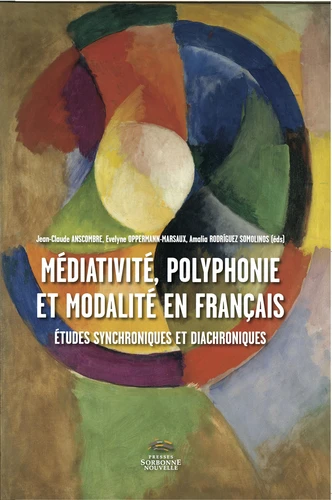Médiativité, polyphonie et modalité en français. Etudes synchroniques et diachroniques
Par : , ,Formats :
Disponible dans votre compte client Decitre ou Furet du Nord dès validation de votre commande. Le format Multi-format est :
- Pour les liseuses autres que Vivlio, vous devez utiliser le logiciel Adobe Digital Edition. Non compatible avec la lecture sur les liseuses Kindle, Remarkable et Sony
 , qui est-ce ?
, qui est-ce ?Notre partenaire de plateforme de lecture numérique où vous retrouverez l'ensemble de vos ebooks gratuitement
Pour en savoir plus sur nos ebooks, consultez notre aide en ligne ici
- Nombre de pages268
- FormatMulti-format
- ISBN978-2-87854-961-4
- EAN9782878549614
- Date de parution04/09/2017
- Protection num.NC
- Infos supplémentairesMulti-format incluant PDF avec W...
- ÉditeurPresses Sorbonne Nouvelle via Op...
Résumé
This volume unites and confronts the work concerning three domains of French pragmatic semantics that are usually separated: mediativity, modality and polyphony. Beyond the differences and specificities of each of these subjects is the question that unites them into a single interrogation, regarding the relationship between the author of an utterance and the discourse and the content of what is said.
This work positions itself at this intersection, where general theoretical studies and more specific studies cross paths, a meeting point between synchronic and diachronic analysis.
This work positions itself at this intersection, where general theoretical studies and more specific studies cross paths, a meeting point between synchronic and diachronic analysis.
This volume unites and confronts the work concerning three domains of French pragmatic semantics that are usually separated: mediativity, modality and polyphony. Beyond the differences and specificities of each of these subjects is the question that unites them into a single interrogation, regarding the relationship between the author of an utterance and the discourse and the content of what is said.
This work positions itself at this intersection, where general theoretical studies and more specific studies cross paths, a meeting point between synchronic and diachronic analysis.
This work positions itself at this intersection, where general theoretical studies and more specific studies cross paths, a meeting point between synchronic and diachronic analysis.

















